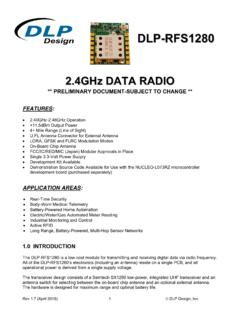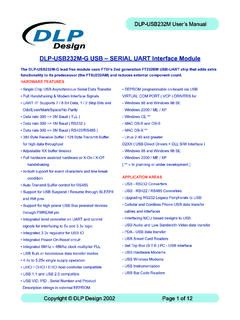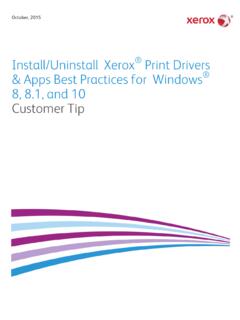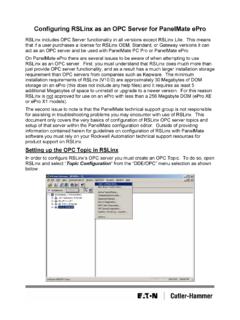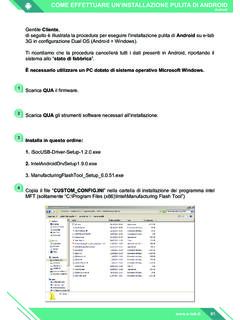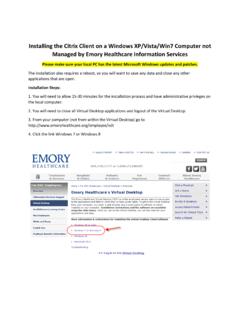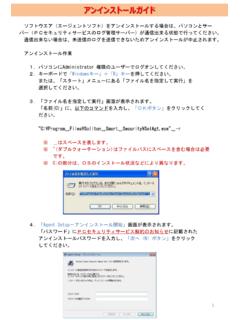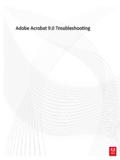Transcription of FTDI USB-Serial Converters Re-installing Drivers
1 FTDI USB-Serial Converters Re-installing Drivers This document describes how to remove the Drivers for all FTDI USB-Serial Converters from your PC, allowing you to install the latest driver for all Converters . This has the following advantages: Avoiding having different driver versions for different Converters connected to your computer. Avoiding conflicts between different versions of the driver which could occur when loading a new driver without un- installing the older one. Removing COM port numbers reserved for Converters no longer connected to your computer. This procedure will un-install the driver for all devices on your system with the Vendor ID of 0403. This includes most FTDI USB-Serial Converters . Other products connected to your system which use the FTDI chipset with the standard FTDI / EasySYNC Vendor and Product IDs may also be un-installed. This procedure is provided for information only and FTDI / EasySYNC can accept no responsibility for any problems resulting from its use.
2 Step 1 - Removing the Drivers Disconnect the USB cable of your FTDI converter (s) from the PC before running the uninstaller. Create a folder on your desktop called CDMuninstaller. Then download the driver uninstaller from the link below and save it into the folder you created. Unzip the CDMU ninstaller program. Right-click on the file and select Run as Administrator to ensure that the program is run with administrator privileges. You should see the window shown in Figure 1 below. Figure 1 Leave the Vendor ID as 0403 and delete the entry 6001 in the Product ID box to leave it blank as shown in Figure 2. Figure 2 Then click the Add button and the window will look like Figure 3 below. Figure 3 Finally, click Remove Devices at the bottom of the Window and the Drivers for all FTDI Converters will be removed. You will get one or more message boxes popping up (see Figure 4) to confirm this. Figure 4 Once the Drivers have all been uninstalled (the large text box will be blank again like Figure 1 above and the status message will be back to ready ) you can close the program.
3 You can now proceed to Step 2. Step 2 - Re-boot the PC It is best to re-boot the PC at this stage before installing new Drivers . You should not connect your USB-Serial converter to the PC yet. You can now proceed to Step 3 to install the driver. Step 3 - installing the latest Drivers Do not connect your USB-Serial converter to the PC USB port yet. Download the exe file from the link below to your PC. Right-click on the file and select Run as Administrator to ensure that the program is run with administrator privileges. A command window will appear (see Figure 5 below). A row of dots indicates progress, and a success message will appear in the command window. It will close after a few seconds. It is recommended to run the installer a second time by right-clicking on and selecting Run as Administrator . Occasionally, Windows runs the processes in the installer in a slightly different order and this can result in a file not being copied over.
4 Running the installer a second time ensures that all files were copied. Figure 5 The driver files are now on your system, and installation of any FTDI products will complete automatically using this latest driver when they are connected. You can now connect your USB device and wait for Windows to install it as a USB serial converter and associated USB serial Port. You can now proceed to Step 4 to verify the installation. Step 4 Verifying the Installation Once Windows indicates that the device is installed, you should see the USB serial converter in Device manager. An example is shown in Figure 6. Note that for some products, the description may have been customized and so the text descriptions may not match the ones circled below exactly. The device will show under the Universal serial Bus Controllers section. In most cases, it will also show under Ports (COM & LPT). This depends on whether the Virtual Com Port (VCP) mode is enabled. Figure 6 Some application software requires you to enter the COM port number assigned to your serial adapter.
5 This can be found under the Ports (COM & LPT section). In the example in Figure 6, the adapter was assigned COM12.





